Name HMS Cleopatra Commissioned 5 December 1941 Construction started 5 January 1939 Length 156 m | Laid down 5 January 1939 Decommissioned 15 February 1953 Launched 27 March 1940 Draft 4.3 m | |
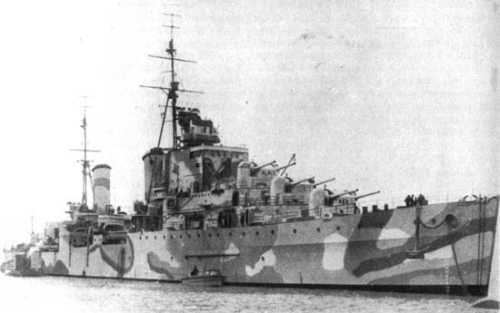 | ||
Builder Hawthorn Leslie and Company | ||
Hms cleopatra 33
HMS Cleopatra was a Dido-class cruiser of the Royal Navy. She was built by R. and W. Hawthorn, Leslie and Company, Limited (Hebburn-on-Tyne, UK), with the keel being laid down on 5 January 1939. She was launched on 27 March 1940, and commissioned on 5 December 1941.
Contents
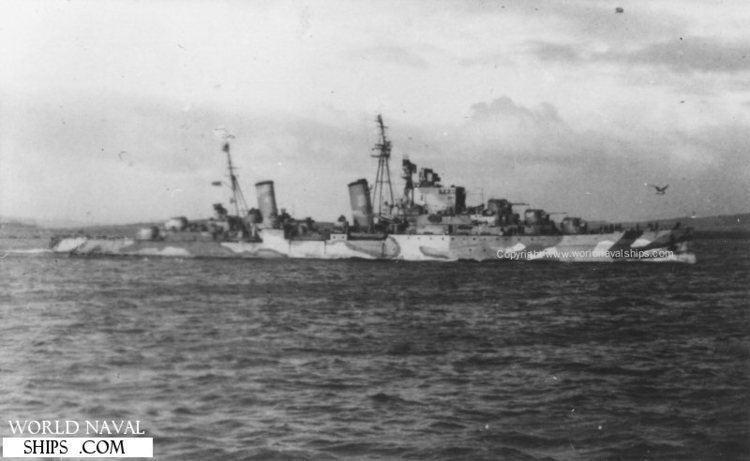
Second World War service
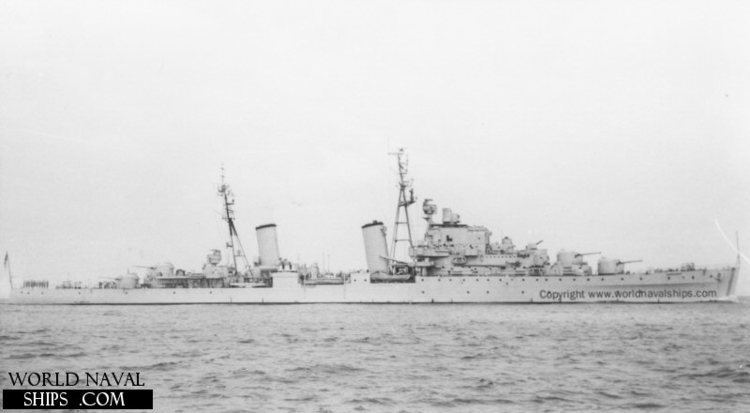
Cleopatra went out to Gibraltar early in 1942, and on 9 February she sailed for Malta, where she was immediately damaged by a bomb. After repair, she was transferred to Alexandria in early March for the 15th Cruiser Squadron. She was Admiral Philip Vian's flagship during the Second Battle of Sirte, when his group of four light cruisers and 17 destroyers held off an Italian force which included the battleship Littorio, two heavy cruisers, a light cruiser and 10 destroyers, which had all been sent to intercept their convoy to Malta. During the engagement, Cleopatra´s radar and wireless stations were wrecked by a 6" round fired by the Italian light cruiser Giovanni delle Bande Nere. Other reports state that Cleopatra's after turrets were also damaged. In June 1942, she covered Operation Harpoon and Vigorous, and in August bombarded Rhodes as a diversion for the Operation Pedestal convoy.
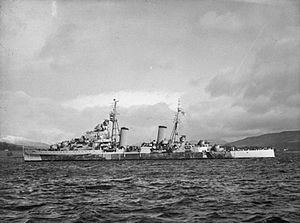
Cleopatra was drydocked in Massawa on 19 September 1942 for minor repairs and cleaning and was undocked five days later. During the refloating, she slipped on the angled drydock, crushing every wooden keel block on the dock but sustaining little hull damage to herself. Captain G. Grantham considered the resulting leak a minor nuisance and ordered Cleopatra to return to service.

By January 1943, Cleopatra was part of Force "K", later Force "Q" at Bône, from where the Axis traffic to and from Tunisia was attacked. Later, she was a unit of the 12th Cruiser Squadron, and was present at the landings in Sicily, Operation Husky, in June, followed by supporting the army ashore. However, on 16 July 1943, Cleopatra was torpedoed by the Italian submarine Dandolo and again badly damaged. Temporary repairs were made at Malta which lasted until October 1943, after which she sailed to Philadelphia, US, for full repairs. Like HMS Phobe, Cleopatra was fitted with quad bofors in place of its pom poms. Mediterranean experience had shown that air attacks over the bows were common and more forward fire power was provided with the quad bofor in B position.

These were completed in November 1944, and in 1945 she went out to the East Indies, where she was the first ship into the newly recaptured base at Singapore in September.
Post war service
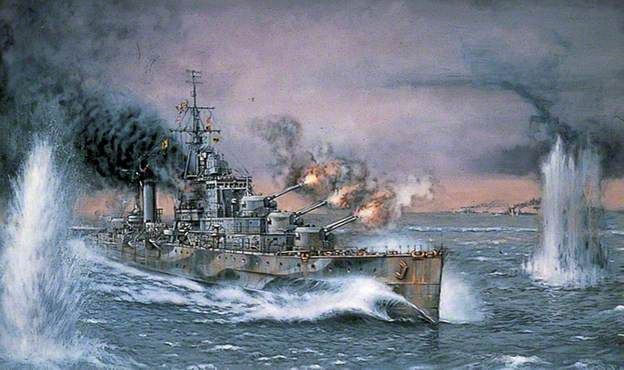
Cleopatra served post-war with the 5th Cruiser Squadron in the East Indies until returning to Portsmouth on 7 February 1946 to refit.
Thereafter, she joined the Home Fleet, 2nd Cruiser Squadron, from 1946 to early 1951 and after a major refit and minimal update with the quad bofors landed and replaced by 3 twin Mk 5 40mm, later served in the Mediterranean from late 1951-early 1953. While in the Mediterranean, she took a starring role in the 1953 film of C.S. Forester's Brown on Resolution, (called Sailor of the King in Britain, and Single-handed in the United States). Cleopatra plays both the fictional Royal Navy ships "HMS Amesbury" and "HMS Stratford". As Amesbury she is heroically sunk by the more powerful German raider Essen, (portrayed by HMS Manxman with large mock-up gun turrets), and as Stratford, she triumphs at the end of the story. The two battle sequences depict this open-bridge light-cruiser firing her guns and torpedoes in some detail.
She returned to Chatham on 12 February 1953 to be paid off. In June of that year she took part in the Fleet Review to celebrate the Coronation of Queen Elizabeth II. From late 1953 to 1956 HMS Cleopatra was flagship of the reserve squadron. On 15 December 1958, she arrived at the Newport yard of J Cashmore for breaking up.
